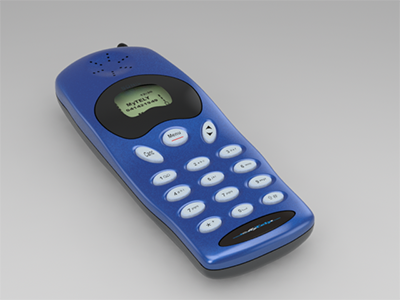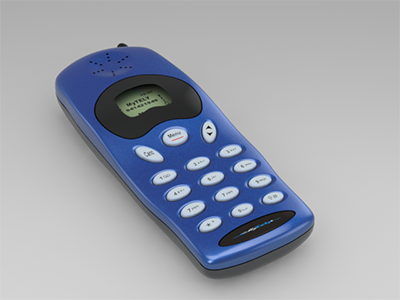Raytracing Settings
The settings for the raytracing rendering engine.
Raytracing
- Displacement
-
Deselect to reduce rendering time.
- Cores (0 = max)
- For every physical core, there is one virtual core. So a quad core computer actually has eight cores total (four physical, four virtual). Since the number of cores is always a multiple of two, select an even number to avoid ambiguity.
- Tracing Depth
- Define the maximum number of bounces a ray will have (diffuse, reflection, etc.).
- Glossy Depth
- Limit the tracing depth of blurred reflections and refractions.
- Trace Dispersion
- Enable to render gems more realistically; however, this will increase rendering time and use more memory.
- Min./Max. Antialiasing Subdivs
- Pixels are composed of squares, which can produce jagged lines where edges meet. Antialiasing smooths out these jagged lines.
- Blurred Reflection
- Trace blurred reflections and refractions. The maximum tracing depth is defined in the Glossy Depth parameter.
- Ambient Occlusion
- Ambient occlusion approximates global illumination, and it is a time-efficient option. It achieves its illumination effects by identifying pixels that are occluded (blocked) from environmental lighting by nearby objects and reducing their brightness.
Global Illumination
- Enable Field Map
- Field mapping is a new proprietary technique that consistently evaluates the lighting that cannot easily reach the viewer. It is combined with Final Gathering to give high accuracy consistent irradiance evaluation.
- Field Density
- This parameter defines the resolution (cells) of the field map. The higher the value, the higher the resolution of the map, leading to more detailed evaluation. A higher value is typically needed for big complex scenes but it also requires more memory. This value typically ranges from 100000 to 1000000 cells.
- Cell Size
- This parameter corresponds to the number of cells used for evaluation. Lowering this value can improve computations significantly, but values that are too low may result in artifacts being placed particularly close to corners. This value typically ranges between 1/100 and 1/1000 of the value used in field density (usually a value between 300 and 1000).
- Enable Caustics
- Caustic photon maps are formed by light particles hitting diffuse surfaces after bouncing on a shiny reflector/refractor. These maps are directly visualized and should be populated by a lot of photons to yield an accurate visual result. Note that caustics can also be formed by final gathering; caustics estimated by field mapping are usually more accurate when the light source is small (or a point light)- on the other hand, final gathering can estimate much better caustics from large area lights or the sky.
- Final Gathering
- Final gathering is another global illumination solution that can be used in conjunction with field mapping or alone. Using it with field mapping is preferred whenever light is able to find its way onto the scene relatively easily; the diffuse depth in that case may be very small (even only 1 leading to fastest results). In cases where lighting is easier to evaluate based on rays starting from the viewer, for example in sun-sky interiors, using final gathering alone should be preferred; in such a case, diffuse depth should be increased (to a value 3 or more).
- Samples
- These are the rays used for final gathering estimation. The higher the value, the more accurate the results will be, but it’ll take longer to trace them. Values are typically ranging from 100 to 1000, but it may be necessary to increase them whenever there is big lighting variation.
- Diffuse Depth
- Control the maximum number of diffuse bounces.
- Irradiance Cache
- Irradiance cache is a technique that is almost always used with final gathering, in order to accelerate rendering. Irradiance samples computed by final gathering are reused based on a world-space interpolation scheme.
- Sample Density (%)
- This parameter corresponds to the density of irradiance samples taken on the image. The higher the density, the more the samples there will be, resulting in a smoother irradiance interpolation over the image. Nevertheless, there is a trade-off here since more samples also means higher render times and more memory needed. The typical range for this value is between 70% and 90%; it is recommended to not go lower than 60% or higher than 95%.
- Min. Distance (pix)
- Irradiance cache density in world space is usually higher on curved or occluded objects (for example, near corners). This parameter influences the density of irradiance samples when visualized on the image plane. Setting a minimum distance (in px) will force reusing samples in nearby corners, without overpopulating irradiance cache in these places. Increasing this value too much though, will lead to light leaks since distant samples will be taken into account in potentially occluded areas.
Channels
- Alpha
- Create an opaqueness grayscale image with respect to the background. A black color corresponds to no opaqueness (background is fully visible) while a gray color corresponds to partial opaqueness.
- Ambient Occlusion
- This channel gives an image of Ambient Occlusion lighting.
- Depth
- Depth Channel gives the depth (distance along camera Z-axis) of the first hit objects in the scene. The depth values will be mapped afterward to a gray-scale image according to Min/Max Z.
- Direct
- Display direct lighting.
- Global Illumination (GI)
- Display global illumination.
- Irradiance
- This channel shows the Irradiance, computed by photon mapping and final gathering and interpolated using the Irradiance Cache (if used). This channel is used in conjunction with illuminance photometric analysis (see next table).
- Invert Mask (Imask)
- Display indexed objects in black and other objects in white.
- Material
- Display each material in a distinct color.
- Mask
- Mask selected objects/groups and create masks for post processing processes.
- Normal
- Stores the normals of the first hit objects in the scene. Black is assigned to vector (-1,-1,-1), while white is assigned to vector (1,1,1). Due to the normalization of surface normals, these values are never reached; instead we get intermediate colors.
- Object ID
- Display each object in a distinct color.
- Position
- Display the position of each point of the scene regarding the global frame; useful for post processing purposes.
- Reflection
- Display reflections.
- Refraction
- Display refractions.
- Transparent
- Display transparency (thin film like glass, alpha mapping transparency).
- UV
- Display the UV coordinates of objects in the scene.

